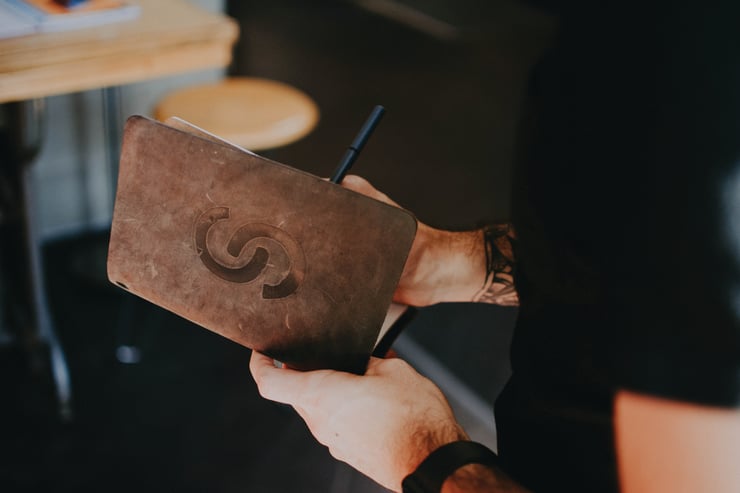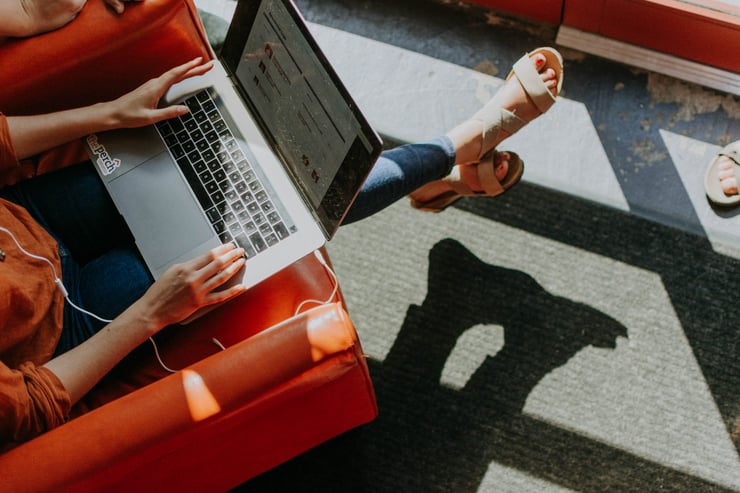How to find the balance between influencer partnerships that drive value and the fluidity in brand guidelines that success requires.
Witty repertoire? Check. Unique, interesting idea that keeps people entertained or engaged? Check. Growing following on a social channel? Check. In today's digital environment, all social media users need is a good idea and the enthusiasm or passion to promote it, and they can skyrocket into the coveted realm of 'influencer'. Influencers have grown to carve out a comfortable portion of the advertising market on social channels, partnering with brands all over the globe to promote products and experiences. And the impact is noticeable. A firmly rooted trust between influencers and their audiences provides brands an established market to reach their target audiences and the potential to leverage that trust to generate interest in their own offering.
If you've worked with SimpsonScarborough, you've probably heard us speak at length about the importance of strong, consistent brand management. We believe in a branded house, regularly maintained institutional brand guidelines, the obvious benefits of a centralized marketing and communications effort and a communications strategy that ladders up to core brand messaging. All of these actions are employed in the name of tight, strategic brand control.
Without contradicting the points above, we aren't alone in speaking to the increased importance of building an influencer strategy. Pinpointing individuals who amass followers interested in their personal, authentic content — it's a smart and necessary move at a time when institutional trust is at an all-time low (particularly for Gen Z). And influencers are not going away; rather, they're becoming more essential as diverse mediums and channels continue to fragment beyond the expertise and means of anyone's communications team.
Colleges and universities need to better leverage influencers' savviness to produce content that engages new audiences and — vitally — feels natural and at home in a channel. And yes, that content must be brand-aligned. But to survive in today's landscape, brands need to bend. As painful as it feels to brand managers, they need to accept imperfection.
So, how do brands or institutions do it right? Here are some examples of influencer marketing gone right, wrong, and somewhere in the middle:
Doing it Right: Baylor
- Brooklyn and Bailey McKnight are well known to millions of Gen Zers. With a following of nearly 7 million on YouTube, Brooklyn and Bailey give viewers a look into their daily lives sharing input on style, college life, dating, and more. They've spent years curating their content and developing a base of followers that eagerly await new content to be posted. They strike a great balance between talking about brands that support them and fun, interactive content. As students at Baylor, the twins have a viewer base that is well positioned to understand the experience and value Baylor offers as an institution.
- Baylor has a partnership with Bailey and Brooklyn to showcase the campus experience a few times each year, and that has served them well in conveying campus and student life and the benefits of the location. Beyond the formal partnership, Baylor's handling of COVID-19 protocols landed them positive input from the twins on their social platforms when both announced in August on Instagram that they tested positive for COVID-19. Clearly not part of the content plan, Baylor's testing, quarantine guidelines, and communications all found their way into the twins' announcement, showcasing the institution in a positive light. During a difficult time for all institutions, Baylor was able to generate some kudos for putting the work in to ensure the safety of their students and community — organically.
All the Wrong Vibes: Sherwin Williams
- When you think of teenage interests, commercial paint might not be at the top of your list. But TikTok is full of surprises. College Student, TikTok member, and Sherwin-Williams part-time employee Tony Piloseno amassed 1.5 million followers and tens of millions of views and likes by making videos that asked viewers to guess the outcome of professional paint-mixing videos like this.
- Recognizing the potential that this had, Piloseno created a digital marketing pitch to Sherwin-Williams' corporate office that demonstrated not only the popularity of these videos but the potential the company had to leverage his account to reach an audience unlikely to have ever had a reason to interact with a paint company previously. It was a dream opportunity for a brand: to be the first in the door. However, instead of leveraging it, Sherwin-Williams ignored Piloseno's emails and then abruptly terminated his employment after accusing him of stealing company time and property and generating customer complaints.
- And so, a dream chance for a brand became a nightmare for an influencer because the brand chose rigidity and control over flexibility and collaboration. Rather than embrace someone with love for the brand who wanted to play in their playground, Sherwin-Williams chose the route of strict gatekeeping, and in doing so, ostracized a massive audience of potential customers.
What institutions can take away from these examples are critical points in marketing and brand planning for 2021 and beyond.
Be Flexible Upstream
Consider influencers when updating or establishing your brand guidelines to account for those who can speak on behalf of your brand in the right way but are approaching it in unique ways. This can form a concentrated owned media strategy to share content, tools, and resources that may be picked up organically by users, or a resource hub available to paid influencers you're working with that give an influencer a sense of your brand and personality. Still, it allows them to translate it in their own way when communicating with followers. Set Goals and Define Success
Sponsored influencer marketing can be difficult to measure. Setting goals upfront with your team and an influencer can clarify how you are defining success. Goals can range from building brand awareness (comments, likes, shares, etc.), reaching a new, untapped audience (driving targeted traffic to a landing page or digital experience), or generating leads (visits & applications).Expect the Unexpected
Planned or unplanned, and whether your institution is aware or not, influencer marketing will infiltrate your digital ecosystem. Thousands of college experience, visit, and application process videos are available on YouTube, with commentators openly discussing the schools they have applied to or are currently attending. Have a plan on how to respond to reactions or questions that may result from these types of posts and, if it works for your brand, share the videos out with prospects as a good, first-party point of view from someone who's experiencing college today. Do Your Homework
If you're an institution interested in moving from organic influencer presence to paid sponsored marketing, there are several things to consider: -
- Who are you partnering with?
An influencer's viewer base may be large, but if the influencer doesn't align with your institution's values, it's not worth it. Content will appear inauthentic, and your brand will absorb all of the not-so-great controversies your influencer may be involved in. - Is the following real?
Many social media platforms struggle with bot traffic, inflating follower figures for influencers in an unnatural way. - Are you abiding by FTC guidelines?
This is less a concern for institutions but something to be educated on. Create content that is authentic to the academic and student life experience that your institution offers. Misleading facts about tuition, opportunities, or living quarters could land your institution in hot water.
- Who are you partnering with?
Use these guidelines as you build out your influencer strategy in 2021, and don't forget to allow your brand the fluidity it needs to authentically benefit from the influencers who can drive true value for your institution.
This article was a collaborative effort by our Director of Marketing & Media Planning, Sara Wallace & Strategist, Jack Edgar. Read more about them, and the rest of our team, here.











